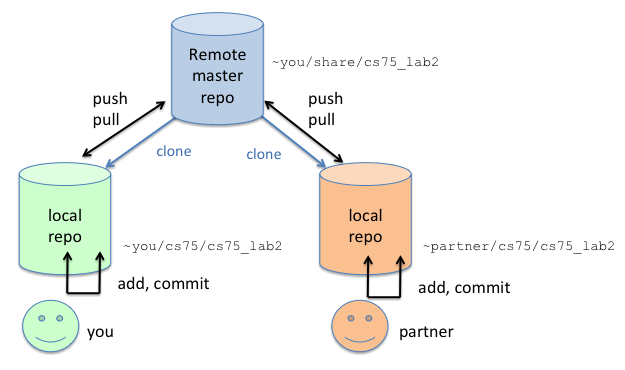

- #Git add remote branch from local how to
- #Git add remote branch from local password
Select your new Eclipse project and click "Team" > "Push To" and enter "Your GitHub Clone URL" and your GitHub password(with the free github accoutns do not enter a password but leave blank), leave the user as "git". if you don't have SSH keys yet you may generate them on the second tab "Key Management" of this dialog, use a good pass phrase to protect your private key, for more details see "working with key passphrases". open "Window" > "Preferences" and ensure that your SSH2 home is configured correctly (usually this is ~/.ssh) and contains your SSH2 keys (upload your public key to your GitHub account settings). you get a fresh clone URL for this new repository. follow EGit/User Guide/Getting Started to create a new local repository (with your content instead of the demo project). Pushing a Local Repository to GitHub Create Local Repository If it is not checked, the Team operations can still be enabled later on by choosing the project in eclipse and selecting Team -> Share Project. Enable Git Team operations on imported projects - If this checkbox is selected the imported project are shared with the EGit Team provider. On the next page the Eclipse projects found in the cloned repository are presented. If you end the wizard with the "Cancel" button later on you will be asked if the clone should be deleted. This is necessary to find the eclipse projects. Note that if you press "Next" on this page the repository will immediately be cloned by the wizard. If not checked, the finish button is enabled. In this case the finish button is disabled and the wizard continues with the project selection. Import projects after clone - If checked, the repository is searched for eclipse projects. Remote name - Define a name for the remote repository. Initial branch - Choose here which local branch will be created and checked out. It will be created by the wizard if it does not yet exist. Directory - The directory which will contain the Git repository. On the next page define where you want to store the repository on your file system and define some initial settings. On the next page choose which branch should be cloned from the remote repository: file - File system access to the repository. https - Hypertext Transfer Protocol Secure can be tunneled through firewalls. http - Hypertext Transfer Protocol can be tunneled through firewalls. Typically used for authenticated write access to the repository. git+ssh - Git over secure shell (SSH) protocol. Typically used for anonymous read access to the repository. This protocol doesn't provide authentication. git - The most efficient built-in git protocol (default port 9418). Password The password used for authentication. User - The user name used for authentication. Protocol - One of the protocols described below. Repository Path - Path to the remote repository or on the file system. Host - The name of the remote host or empty if cloning from the file system. This field is automatically synchronized with the other fields. URI - The complete URI of the remote repository or the path on the file system. On the first page of the wizard enter the location of the remote repository: Start the import wizard by navigating to File -> Import. Using the Git import wizard you can clone remote repositories using different transport protocols.Īdditionally you may import existing Eclipse projects into your workspace and share the projects with the Git team provider. 
Working with remote Repositories Cloning remote Repositories 1.3 Pulling (merge or rebase) new changes from upstream.1.2 Pushing a Local Repository to GitHub.You can simply run a plain git push or git pull without any further options! The tracking relationship saved the source/target branch and the exact remote so that it can be looked up in further interactions. But here's a brief explanation: such a tracking relationship makes any future "push" and "pull" operations very easy.
#Git add remote branch from local how to
The article " How to Set Upstream Branch in Git" explains this in detail. Please mind the "-u" option: it establishes a "tracking relationship" between the existing local and the new remote branch. Now, with the correct local branch checked out, you can publish it on a remote repository - thereby "creating" it on that remote: $ git push -u origin (2) Push the Local Branch to the Remote Repository If such a local branch doesn't yet exist, you can easily create it: # To create a new local branch. If you already have such a local branch at hand, you can simply check it out: $ git checkout As already said, creating a remote branch actually starts on the opposite end: in your local Git repository! You need to make sure you have a local branch that represents a state you want to push to the remote.






 0 kommentar(er)
0 kommentar(er)
